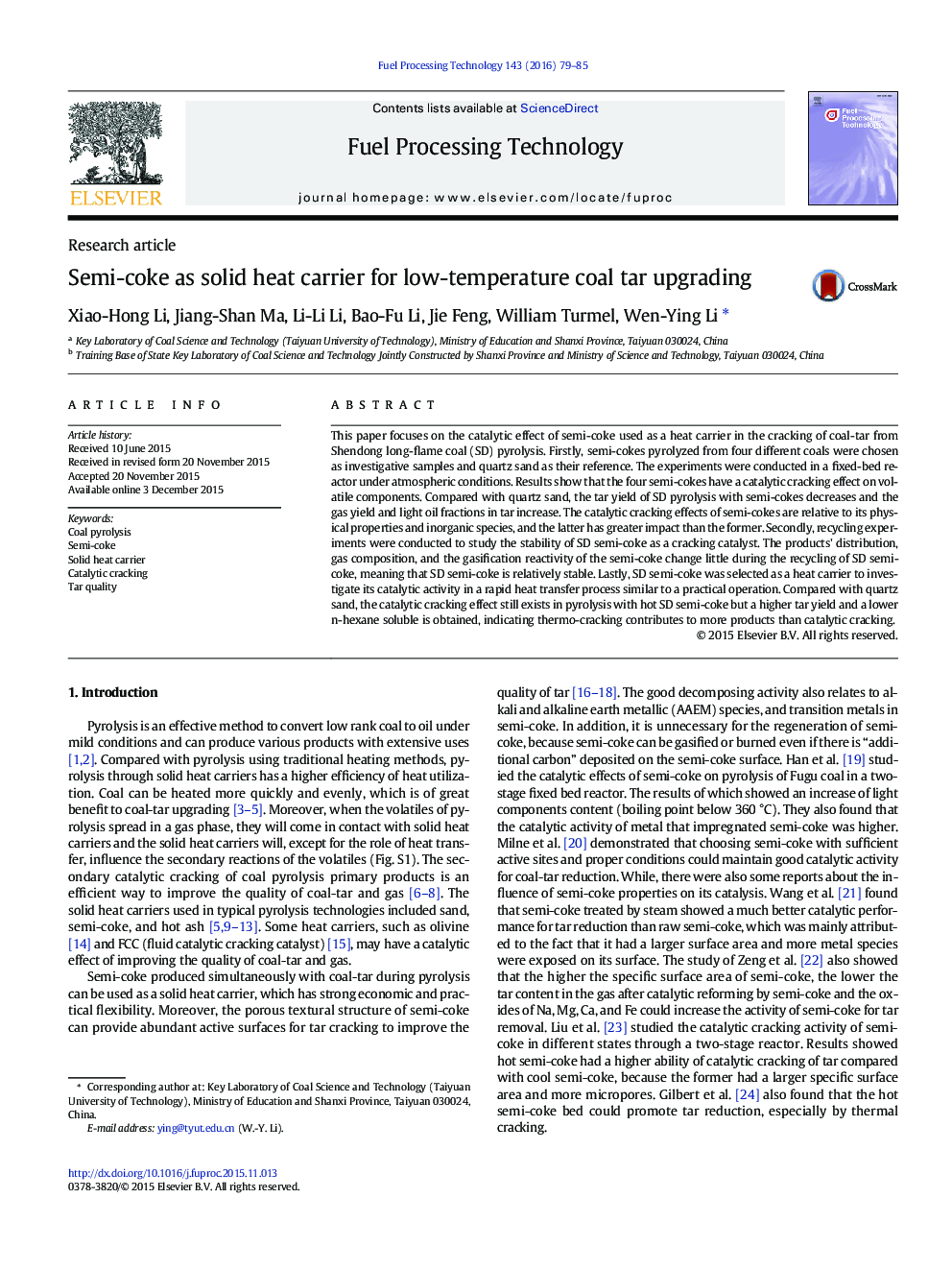| کد مقاله | کد نشریه | سال انتشار | مقاله انگلیسی | نسخه تمام متن |
|---|---|---|---|---|
| 209202 | 461660 | 2016 | 7 صفحه PDF | دانلود رایگان |
• Inorganic species play more important role than physical properties of semi-coke in coal-tar upgrading.
• The stability of Shendong semi-coke as solid heat carrier is relatively good.
• Hot Shendong semi-coke as the solid heat carrier has catalytic activity under practical conditions.
• Thermal cracking is the main factor influencing the tar yield.
This paper focuses on the catalytic effect of semi-coke used as a heat carrier in the cracking of coal-tar from Shendong long-flame coal (SD) pyrolysis. Firstly, semi-cokes pyrolyzed from four different coals were chosen as investigative samples and quartz sand as their reference. The experiments were conducted in a fixed-bed reactor under atmospheric conditions. Results show that the four semi-cokes have a catalytic cracking effect on volatile components. Compared with quartz sand, the tar yield of SD pyrolysis with semi-cokes decreases and the gas yield and light oil fractions in tar increase. The catalytic cracking effects of semi-cokes are relative to its physical properties and inorganic species, and the latter has greater impact than the former. Secondly, recycling experiments were conducted to study the stability of SD semi-coke as a cracking catalyst. The products' distribution, gas composition, and the gasification reactivity of the semi-coke change little during the recycling of SD semi-coke, meaning that SD semi-coke is relatively stable. Lastly, SD semi-coke was selected as a heat carrier to investigate its catalytic activity in a rapid heat transfer process similar to a practical operation. Compared with quartz sand, the catalytic cracking effect still exists in pyrolysis with hot SD semi-coke but a higher tar yield and a lower n-hexane soluble is obtained, indicating thermo-cracking contributes to more products than catalytic cracking.
Figure optionsDownload as PowerPoint slide
Journal: Fuel Processing Technology - Volume 143, March 2016, Pages 79–85
